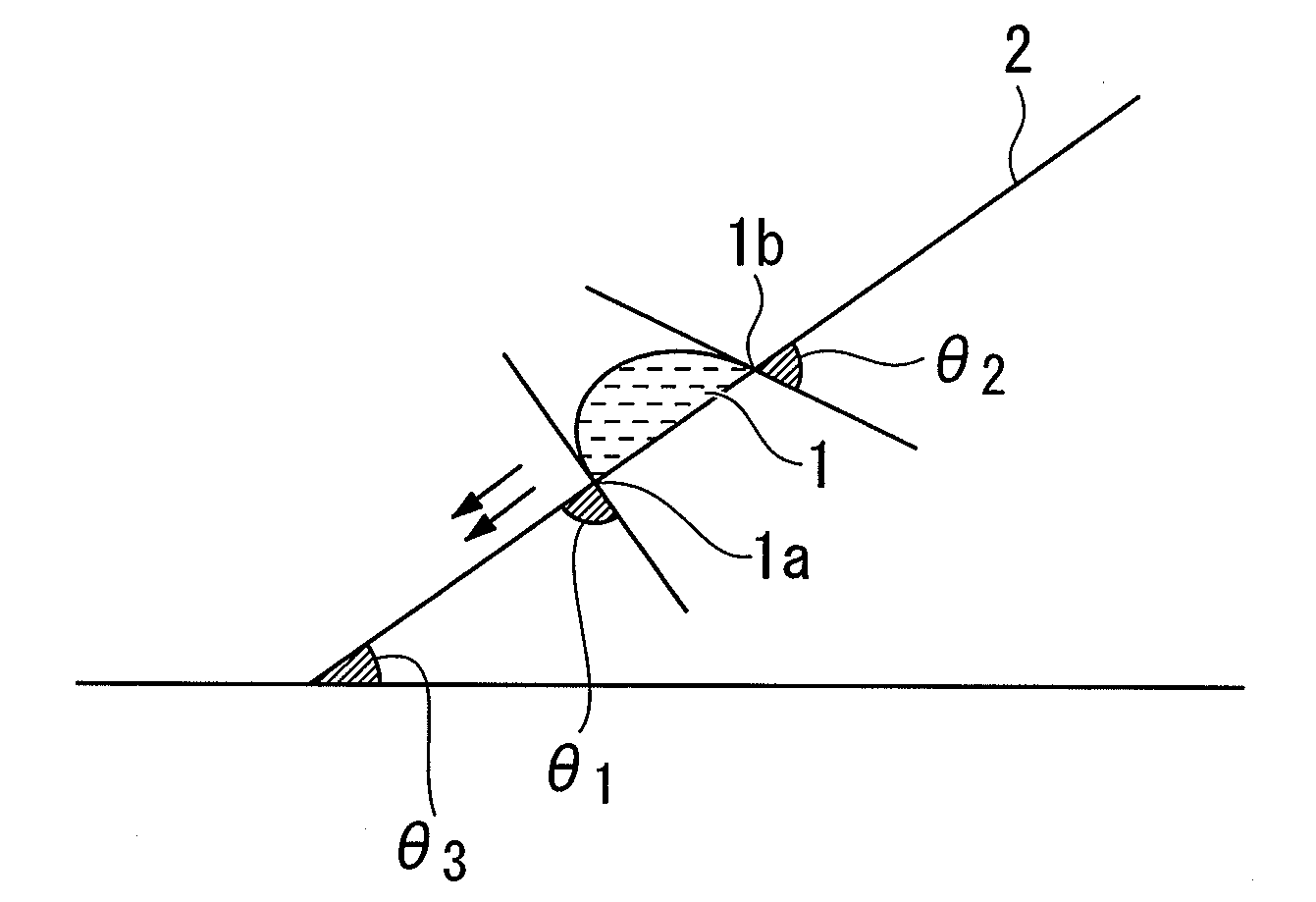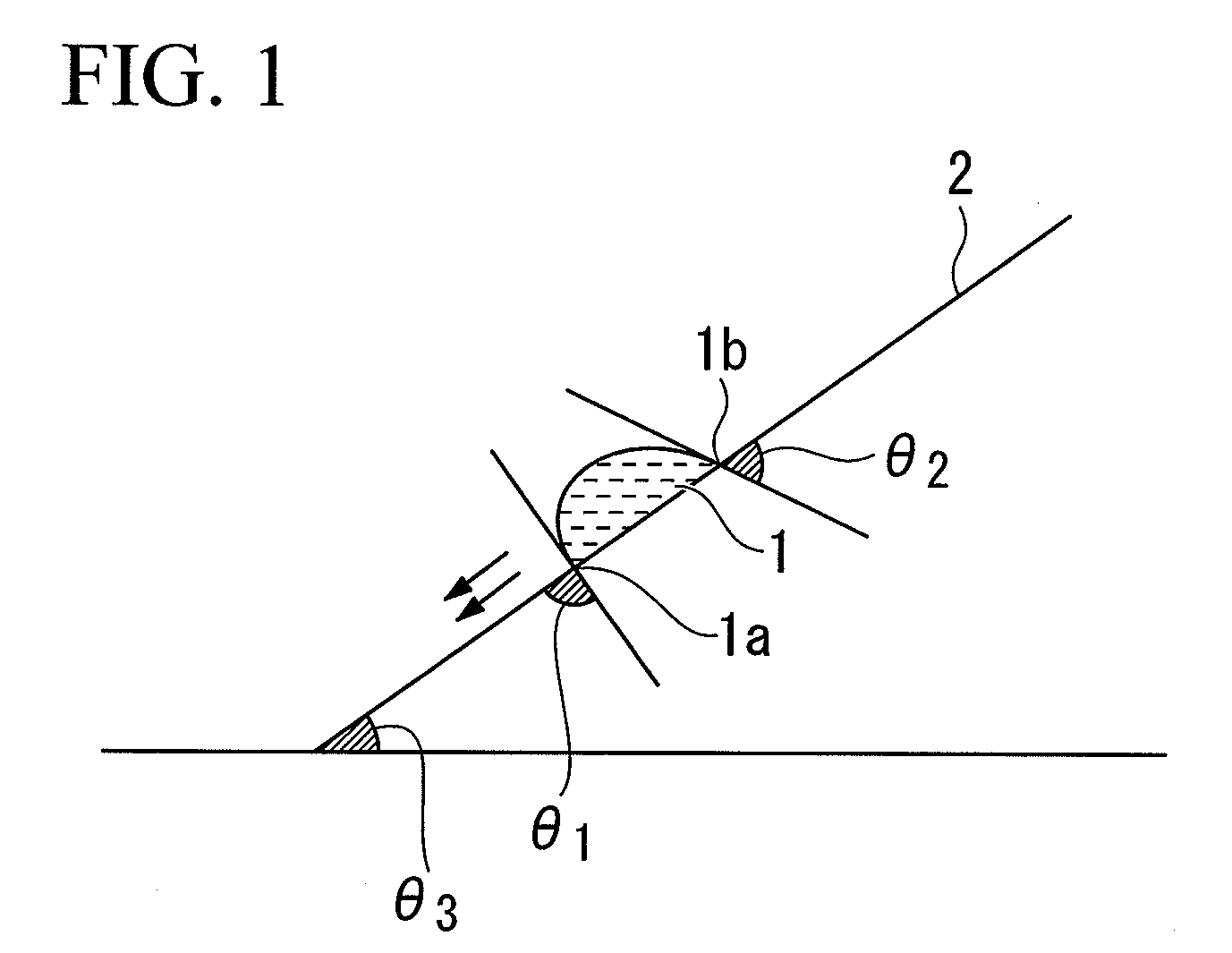Resist composition for immersion exposure, method of forming resist pattern using the same, and fluorine-containing compound
a technology of resist composition and immersion exposure, which is applied in the direction of optics, basic electric elements, electric apparatus, etc., can solve the problems of adversely affecting productivity, affecting lithography properties, and speed becoming low, so as to reduce elution of substances, adversely affecting lithography properties, and enhancing the hydrophobicity of resist film surfaces
- Summary
- Abstract
- Description
- Claims
- Application Information
AI Technical Summary
Benefits of technology
Problems solved by technology
Method used
Image
Examples
example 1
[0494]Synthesis Example of Compound (1):
[0495]200 ml of a THF solution containing 11.5 g (76.4 mmol) of a fluorinated alcohol (C2F5CH2OH), 16 g (83.3 mmol) of ethyldiisopropylaminocarbodiimide hydrochloride (EDCl) and 0.4 g (3.5 mmol) of dimethylaminopyridine (DMAP) was charged into a 500 ml three-necked flask in a nitrogen atmosphere, and 16.0 g (83.3 mmol) of 2-carboxyethyl acrylate was added thereto, followed by stirring for 4 hours to effect a reaction.
[0496]After conducting thin-layer chromatography to confirm that the raw materials had been consumed, water was added to stop the reaction. Then, the reaction solvent was concentrated under reduced pressure, and extraction was conducted with ethyl acetate three times. The obtained organic phase was washed with water three times. Thereafter, the solvent was distilled off under reduced pressure, and the resulting product was dried, thereby obtaining 12.5 g of a compound (1) which was an ester compound.
[0497]The obtained compound (1)...
example 2
[0501]Synthesis Example of Compound (2):
[0502]200 ml of a THF solution containing 11.5 g (76.4 mmol) of a fluorinated alcohol (C2F5CH2OH), 16 g (83.3 mmol) of ethyldiisopropylaminocarbodiimide hydrochloride (EDCl) and 0.4 g (3.5 mmol) of dimethylaminopyridine (DMAP) was charged into a 500 ml three-necked flask in a nitrogen atmosphere, and 15.0 g (69.4 mmol) of mono(2-acryloyloxyethyl)succinate was added thereto, followed by stirring for 4 hours to effect a reaction.
[0503]After conducting thin-layer chromatography to confirm that the raw materials had been consumed, water was added to stop the reaction. Then, the reaction solvent was concentrated under reduced pressure, and extraction was conducted with ethyl acetate three times. The obtained organic phase was washed with water three times. Thereafter, the solvent was distilled off under reduced pressure, and the resulting product was dried, thereby obtaining 21.24 g of a compound (2).
[0504]The obtained compound (2) was analyzed by ...
example 3
[0507]Synthesis Example of Polymeric Compound (3):
[0508]4.00 g (14.49 mmol) of the compound (1) obtained in Example 1 was charged into a 100 ml three-necked flask equipped with a thermometer and a reflux tube, and 22.67 g of tetrahydrofuran was added thereto and dissolved. Then, 0.58 mmol of dimethyl 2,2′-azobis(isobutyrate) (product name: V-601) as a polymerization initiator was added and dissolved in the resulting solution.
[0509]Subsequently, the solution was stirred while heating at 80° C. for 6 hours in a nitrogen atmosphere, and was then cooled to room temperature. The resulting polymer solution was concentrated under reduced pressure, and dropwise added to an excess amount of a methanol / water mixed solvent to thereby precipitate a polymer. Then, the precipitated polymer was separated by filtration, followed by washing and drying, thereby obtaining, as an objective compound, 1.5 g of a polymeric compound (3) represented by formula (3) shown below.
[0510]With respect to the compo...
PUM
 Login to View More
Login to View More Abstract
Description
Claims
Application Information
 Login to View More
Login to View More - R&D
- Intellectual Property
- Life Sciences
- Materials
- Tech Scout
- Unparalleled Data Quality
- Higher Quality Content
- 60% Fewer Hallucinations
Browse by: Latest US Patents, China's latest patents, Technical Efficacy Thesaurus, Application Domain, Technology Topic, Popular Technical Reports.
© 2025 PatSnap. All rights reserved.Legal|Privacy policy|Modern Slavery Act Transparency Statement|Sitemap|About US| Contact US: help@patsnap.com



